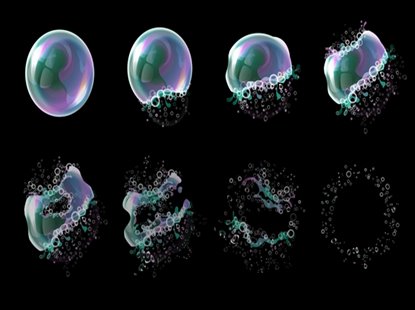Picking the Right Defoamer for Your Particular Application Needs
Picking the suitable defoamer for certain application needs is a nuanced procedure that requires careful factor to consider of numerous variables, such as the foam tool, operating, and kind conditions. Understanding the nuances of defoamer performance-- including speed and determination-- while also accounting for regulative and environmental aspects is critical.
Understanding Foam Development
Foam formation happens when gas is entraped within a fluid, producing a stable framework of bubbles. This phenomenon can substantially impact numerous commercial processes, especially in industries such as food production, drugs, and wastewater therapy. The presence of foam can hinder blending, lower product quality, and also lead to operational inefficiencies.
Foam commonly forms because of a combination of factors, including surface-active representatives, agitation, and the features of the fluid phase. Surfactants lower the surface area stress of the liquid, assisting in the development of bubbles that can stabilize and coalesce. Frustration, whether from mechanical mixing or gas introduction, improves bubble development, leading to enhanced foam volume.
Recognizing the mechanics of foam formation is essential for sectors aiming to enhance their processes. By recognizing the specific conditions that advertise foam generation, organizations can carry out approaches to alleviate its effects.
Kinds Of Defoamers Available
Various sorts of defoamers are offered to address the challenges positioned by foam in industrial applications. defoamers. Extensively categorized, defoamers fall under three categories: silicone-based, non-silicone-based, and natural defoamers
Silicone-based defoamers are renowned for their efficiency and stability throughout a vast array of temperature levels and pH degrees. They are commonly utilized in applications where solid foam suppression is necessary, such as in coverings, adhesives, and paints. Their reduced surface tension permits fast foam collapse.
Non-silicone-based defoamers, usually made from organic compounds, use a choice for applications sensitive to silicone deposits. These defoamers can be more split right into polyether and ester types, each customized to fulfill particular formula requirements. Non-silicone defoamers are often made use of in food handling and personal care items as a result of their compatibility with various formulas.
Natural defoamers, obtained from plant or animal resources, are gaining traction because of their environmentally friendly account. These items are especially appealing in applications where governing compliance and sustainability are critical, such as in agrochemicals and biotechnology.
Choosing the ideal sort of defoamer is essential for optimizing performance and making sure compatibility with certain applications.
Trick Application Factors To Consider
When choosing a defoamer, it is crucial to consider the details application requirements to guarantee ideal performance. defoamers. Different industries have distinct demands, such as food processing, pharmaceuticals, or wastewater treatment, and each application might need special defoaming residential or commercial properties
Trick variables to examine consist of the tool in which the defoamer will certainly be made use of, whether it is water-based, oil-based, or a combination thereof. The temperature and pH degrees of the application can additionally significantly influence the performance of a defoamer. Furthermore, compatibility with various other chemicals present in the system is vital to stop damaging responses that might compromise efficiency.
One more important factor to consider is the foaming behavior of the details system. Comprehending whether the foam creates promptly or slowly can guide the selection of a defoamer that targets the source successfully. Moreover, the desired rate of defoaming can affect the option, as some applications call for fast action while others might endure slower defoaming procedures.
Finally, environmental and regulatory considerations ought to not be neglected, particularly in markets with stringent conformity demands. Picking a defoamer that aligns with these aspects ensures both effectiveness and safety and security in the application.

Performance Screening Approaches
Reviewing the performance of a defoamer calls for an organized technique to testing that accurately determines its efficiency in details applications. Different efficiency screening approaches can be employed to ascertain the optimal defoamer for a given solution.
One typical method is the bubble test, which examines the defoamer's capability to lower foam quantity over time. This examination involves creating a stable foam and then adding the defoamer to observe the rate of foam collapse.

Eventually, selecting the proper efficiency testing approach relies on the look at here particular application that site and the sort of foam being addressed. Each technique supplies valuable data that can guide solution modifications and improve the performance of the defoamer in practical applications.
Finest Practices for Selection


Next, take into consideration the defoamer's efficiency in regards to speed of action and persistence. A quick-acting defoamer may be necessary for procedures where quick foam suppression is vital, while a much more consistent formulation might be needed for long term foam control. Furthermore, assess the environmental influence of the defoamer, including its biodegradability and any governing conformity demands.
Conduct trials with picked defoamers to determine their efficiency in real-world problems. By adhering to these best practices, you can enhance foam control effectiveness and guarantee the long life of your processes.
Conclusion
In summary, selecting the suitable defoamer necessitates learn this here now a comprehensive examination of various factors, consisting of foam kind, medium, operating problems, and ecological considerations. Understanding the special qualities of foam formation and the offered defoamer choices is important.
Selecting the ideal defoamer for details application needs is a nuanced procedure that demands mindful factor to consider of several factors, such as the foam kind, operating, and tool conditions.Picking the ideal defoamer is vital for achieving optimum performance in foam control applications. A quick-acting defoamer might be required for procedures where quick foam suppression is essential, while a much more relentless formulation may be needed for extended foam control.In recap, picking the suitable defoamer demands an extensive analysis of various aspects, including foam kind, tool, operating conditions, and environmental factors to consider. Understanding the distinct attributes of foam formation and the readily available defoamer options is critical.